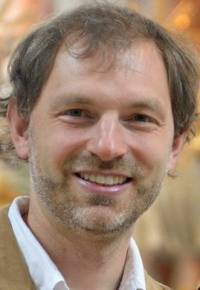This is an old revision of the document!
Michael Kopp
Professor of Theoretical Biology and Evolution
Evolutionary Biology and Modelling Group
Laboratoire d’Analyse, Topologie, Probabilités UMR 7353
Aix-Marseille University
3 Place Victor Hugo
Case 19
13331 Marseille Cedex 3
France
++33 4 13 55 12 01
michael.kopp[AT]univ-amu.fr
General interests
Most broadly, my interests are in ecology and evolutionary biology, in particular population genetics and evolutionary ecology. My own work focuses on theoretical modeling. Currently, my main projects are about competitive speciation and the genetics of adaptation to environmental change, but I am also interested in phenotypic plasticity, coevolution, frequency-dependent selection and sexual selection.
The genetics of adaptation in changing environments
Adaptation lies at the heart of Darwinian evolution, and it may be a key to the survival of species under the conditions of human-induced global change. Despite its importance, many basic questions about the genetic basis of adaptation are still unresolved. This is particularly true for adaptation to gradual environmental change, such as the rise of global temperature and atmospheric C02, or the accumulation of pollutants. To understand the consequences of gradual change, it is important to develop theory that incorporates both genetic and environmental dynamics.
As a starting point for such investigations, I am using the so-called moving optimum model, in which selection is towards an optimal phenotype that changes over time (work together with Joachim Hermisson). Starting from a simple one-locus model and moving on to more complicated multilocus scenarios, we have shown that the speed of environmental change has a strong influence on the genetic basis of adaptation (e.g., on the number, type and temporal order of fixed beneficial mutations). I recently received a grant from the Austrian Science Fund (FWF), which will allow me to extend the model to more complex genetic and ecological scenarios. The aim is to develop a generalized model that reflects both the dynamic nature of selection and the complexity of real organisms, and that makes testable predictions for both short- and long-term evolution.
Models of sympatric and parapatric speciation
In recent years, interest in sympatric speciation has increased considerably. Many theoretical studies have focused on the possibility that sympatric speciation can be be induced by intraspecific competition, via selection for assortative mating. However, these models are also highly debated. Together with my coworkers, I am trying to disentangle some of the open questions by analyzing genetically explicit yet simple models, which allow for analytical treatment. We have been able to describe a number of qualitatively different regimes for the evolution of assortatitive mating, and to clarify the sometimes conflicting roles of natural and sexual selection. We also extended the basic model by allowing females to experience costs of choosiness, and by investigating the effects of different genetic architectures. Currently, we are working on a spatially explicit model, which allows us to investigate different mechanisms of sympatric and parapatric speciation within a unified framework (with Agnes Rettelbach). I am also part of a working group on sexual selection and speciation at NESCent.
Previous work
In collaboration with Joachim Hermisson, I analyzed how frequency-dependent disruptive selection affects the genetic architecture of quantitative traits. Using a modifier approach, we predicted evolution of a highly asymmetric genetic architecture, in which most of the genetic variation is accounted for by a small number of loci.
As a postdoc at the University of Tennessee in Knoxville, USA, I studied (together with Sergey Gavrilets) a multilocus model of predator-prey coevolution. The main purpose of this project was to compare the results from the one-locus and the multilocus case, and thus, to learn about the importance of genetic details in coevolutionary models. The results showed that the multilocus model is more prone to perform coevolutionary cycling, displays higher dynamic complexity and offers new insights into the maintenance of genetic variation.
As a PhD student at the Max-Planck-Institute of Limnology in Plön, Germany, I studied (in cooperation with Ralph Tollrian and Wilfried Gabriel) predation-related phenotypic plasticity in ciliated protozoa of the genera Euplotes, Colpidium, and Lembadion. In particular, I investigated a trophic size-polymorphism in Lembadion bullinum, and how this size-polymorphism interacts with an inducible defense in Euplotes octocarinatus. Furthermore, I developed and analyzed a theoretical model designed to investigate the effects of inducible prey defenses on predator-prey population dynamics and the coevolution of induction thresholds in both predator and prey.
I also collaborated with Jonathan Jeschke in projects on predator functional responses and on drift compensation in stream invertebrates.
